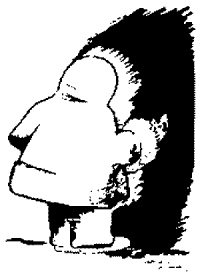What’s the most common type of ambiguity in definitions of ‘digital literacy’?
 Every literacy is alike; each digital literacy is ambiguous in its own way.
Every literacy is alike; each digital literacy is ambiguous in its own way.
I’m currently putting together a journal article applying Empson’s Seven Types of Ambiguity to the concept of ‘digital literacy’.* As I match those definitions of digital literacy I find ambiguous to one of Empson’s seven types, it’s becoming clear that the most common type of ambiguity is Empson’s third conception:
An ambiguity of the third type, considered as a verbal matter, occurs when two ideas, which are connected only by being both relevant in the context, can be given in one word simultaneously.
That is to say, the definition of digital literacy is ambiguous because it holds in tension two ideas that are linked by the context. The term ‘digital literacy’ serves as a kind of shorthand with the wider picture somewhat fuzzy in scope (and hence ambiguous).
Take, for example, the following:
Having digital literacy requires more than just the ability to use software or to operate a digital device; it includes a large variety of complex skills such as cognitive, motoric, sociological, and emotional that users need to have in order to use digital environments effectively.
(Yoram Eshet Alkali & Yair Amichai-Hamburger. CyberPsychology & Behavior August 1, 2004, 7(4): 421-429)
In this example, which is not uncommon, digital literacy is merely a convenient shorthand to some kind of ‘requisite skills to function effectively in a digital context’. However, the scope of the digital context, the level of skills required, and what would constitute effective functioning is not clear.
Similarly, but less scholarly, is the definition included with Microsoft’s Digital Literacy Curriculum:
The goal of Digital Literacy is to teach and assess basic computer concepts and skills so that people can use computer technology in everyday life to develop new social and economic opportunities for themselves, their families, and their communities.
The definition conflates teaching, learning, assessment, concepts and skills and then mentions that this applies to society, the economy, families and communities. Clearly, two words – ‘digital’ and ‘literacy’ – can not do enough explanatory work to make this anything other than ambiguous with a veneer of contextual respectability.
Finally, although there are many more examples, comes the following from a seminal work in the field in 2008:
Digital literacy presupposes an understanding of technical tools, but concerns primarily the capacity to employ those tools effectively. Hence, digital literacy begins with the ability to retrieve, manage, share and create information and knowledge, but is consummated through the acquisition of enhanced skills in problem solving, critical thinking, communication and collaboration. (SNAB, 2001, p.3)
Martin, A., ‘Digital Literacy and the “Digital Society”‘ (in Lankshear, C. & Knobel, M. Digital Literacies: Concepts, Policies and Practices, 2008) p.165
The scope is so wide in this definition of digital literacy that it is difficult to see what isn’t included within it. Without clear boundaries it is difficult to apply and build upon such definitions.
* You may want to read my recent post Why the European view of ‘digital literacy’ is ambiguous for some background. The quotations in this post (and lots more besides) can be found on my wiki at dougbelshaw.com/wiki 🙂

